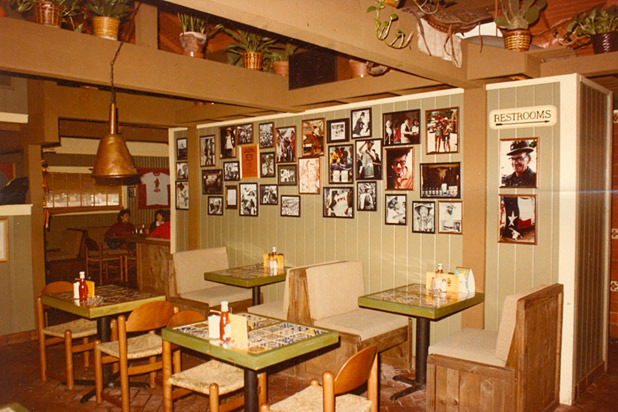The Surprising Origins Of The 10 Biggest Chain Restaurants Slideshow
10) Red Lobster: 705 Restaurants
Bill Darden opened his first restaurant at the age of 19, and in 1968 he opened the first Red Lobster in Lakeland, Fla. Two years later it was purchased by General Mills, who expanded it into a five-unit chain, and this backing ushered in a steady expansion across the Southeast and eventually across the country and into Canada. By 1985, there were almost 400 locations. While the fresh seafood certainly helped to lure customers in, it was a new menu item that was invented by the restaurant, popcorn shrimp, that really helped it take off. While the chain gives off a very distinct "New England" vibe, there are surprisingly only four locations in all of New England, and they're all in Western Connecticut, near the New York State line.
9) Ruby Tuesday: 793 Restaurants
In 1972, Sandy Beall opened the first Ruby Tuesday (named after the Rolling Stones song of the same name) near his University of Tennessee campus. The initial restaurant was opened with $20,000 that Beall had cobbled together from a friend who ran a few local Pizza Huts and four of his fraternity brothers. Over the next 10 years, Beall opened an additional 15 units, and in 1982 the burgeoning chain was sold to Morrison, Inc., who kept Beall on as president, and he became CEO of the entire Morrison company in 1992. After Morrison dissolved in 1996, Ruby Tuesday became its own publicly traded corporation, and today it owns Lime Fresh Mexican Grill, Wok Hay, and Marlin & Ray's Seafood & Sunsets. Beall stayed on board as CEO until retiring in 2012.
8) Olive Garden: 818 Restaurants
Owned by the same restaurant group as Red Lobster, Darden (name sound familiar?), this monster chain was founded by General Mills, not an individual person, in Orlando, Fla. in 1982 (the company, best known for its packaged foods, got rid of all their restaurants when they spun off Darden in 1995). It was created with an eye on rapid expansion, and within seven years 145 Olive Gardens had been opened. Even though the bulk of Olive Garden devotees are regulars (they lure you in with the unlimited salad and bread sticks), a complete revamp has been announced.
5) TGI Fridays: 1,000+ Restaurants
No chain restaurant has a history as storied as T.G.I Fridays. It dates back to 1965, when Alan Stillman was living in Manhattan's Upper East Side and noticed that there were no female-friendly bars where the hordes of young women flocking to the neighborhood could hang out. Stillman wanted to open a place where both sexes could meet and mingle in a cocktail party-atmosphere, and in doing so he created what's widely credited as the first singles bar. Imitators cropped up almost overnight, and the bar, on First Avenue and 63rd Street, got so crowded that roped-off outdoor waiting areas had to be created, a precursor to the modern velvet rope. The bar was revolutionary in other ways, too: it was one of the first to introduce a "ladies' night," pioneered the brass rail that's now ubiquitous, and all the employees were young and wore matching red-and-white striped shirts. If all this talk of singles and drinking seems a little off-brand nowadays, that's because the company made a conscious decision in 1989 to switch the focus from singles to families.
4) Chili’s: 1,400+ Restaurants
Chili's, which is currently undergoing an extensive rebranding, got its start in 1975, when Larry Lavine converted an old Dallas post office into a casual restaurant with Southwest décor that specialized in several different varieties of half-pound hamburgers, tacos, and Texas-style chili, with or without beans. The casual-dining concept, which was still in its infancy, took off, and by 1983 22 additional Chili's had opened in the region. Industry vet Norman Brinker bought the company that year and took it public, in 1986 they rolled out baby back ribs and its famous jingle, and the rest is history.
3) Denny’s: 1,650+ Restaurants
What's today known as Denny's got its start way back in 1953, when friends Harold Butler and Richard Jezak opened a little donut shop in Lakewood, Calif. Its original name? Danny's Donuts. New locations had opened by the following year, when the duo added sandwiches and other entrées to the menu. By 1959, 20 locations were in business and the owners decided to change the name to Denny's to avoid confusion with another local chain, Donut Dan's. The company went public in 1966, and in 1977 it introduced its famous Grand Slam in Atlanta, in homage to Hank Aaron breaking Babe Ruth's home run record. By 1981, more than 1,000 locations were in operation.
2) Panera Bread: 1,673 Restaurants
One of the quickest-expanding chains in the country, Panera Bread got its start in 1993, when Au Bon Pain purchased the St. Louis Bread Company's 20 St. Louis-area bakery-cafés and changed the name to Panera Bread. The new company became so successful that in 1999, Au Bon Pain Co. decided to abandon its flagship company and devote all its resources to Panera, and sold Au Bon Pain to the Compass Group, officially changing its name to Panera Bread. It's a gamble that appears to have paid off.
1) Applebee’s: 1,990+ Restaurants
The world's largest casual dining chain got its start in Atlanta, Ga., in November 1980, when the husband-and-wife duo of Bill and TJ Palmer opened T.J. Applebee's Rx for Edibles & Elixirs. Reportedly, their desired name was Appleby's, and when they learned that name was taken they tried Cinnamon's and Peppers, but those were taken, too. Finally, they got the name they wanted by adding the now-disappeared initials to the front and tweaking the spelling. The original menu featured items including chicken fingers, fried mushrooms, steak fries, onion rings, nachos, potato skins three different ways, burgers, soups, salads, and, oddly enough, eggs Benedict, quiche, and quail (it was the '80s, after all). In 1986 they changed the name to Applebee's Neighborhood Grill & Bar, and even though the company has gone through several corporate owners over the years, Bill Palmer still owns about 40 locations.







